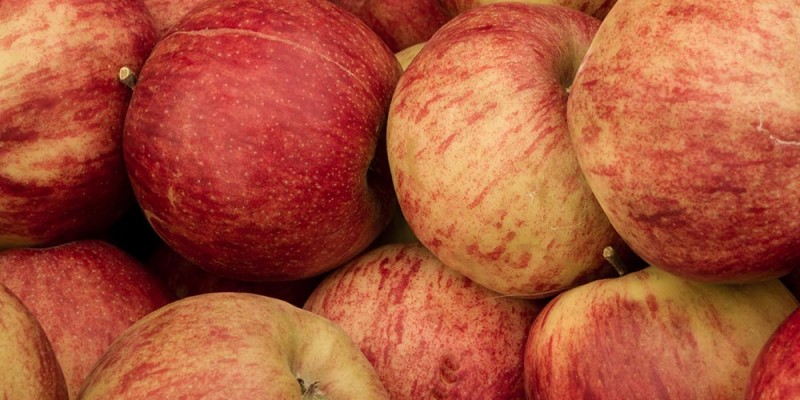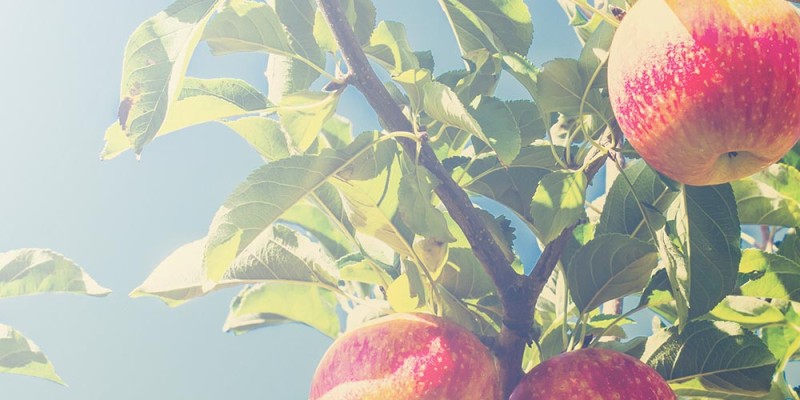Starting hard apple cider from apples you have grown yourself does not have to be difficult. We are going to take you from start to finish. If you are returning and would like to skip to the step you are on click the annotation.
The time to harvest apples is when they ripen and taste good raw.
Prior to all stages any equipment that comes in contact with the cider has been cleaned and sanitized. Using Sodium Hypochlorite and Sodium Metabisulfate respectively. Follow the manufacturer’s instructions.
2 large totes usually produces enough juice to fill a 23 liter or 5 gallon carboy. You can use unpreserved pasteurized apple juice if you don’t have access to apples.
Give the apples a quick wash prior to processing.
If you don’t have a crusher and a press a regular juicer will work well. I have a cold press juicer I used for to juice the apples. Fitting a brewing bag on the out spout will help separate the juice from the flesh. The rest of the apple is expelled out the waste shoot.
From time to time you will want to empty out the brewing bag into a separate bin. This stops it from getting blocked and slowing down the flow of juice.
Once you have all of your apples juiced or 23 liters or 5 gallons of juice its time to start the batch.
Add your pectic enzyme and campden tablets to the juice. Pectic enzyme breaks down pectin in the plant flesh cells releasing more flavour from the cells into the Cider. The campden tablet will kill any bacteria and inhibit the growth of any wild yeast in the juice. 15ml (1 tablespoon) Pectic enzyme will help settle out the suspended solids and clear the batch. Its important to do this 24h hours before the brewing begins to give it time to work.
Yeast nutrient gives the brewing yeast what the apple juice can not and helps the brewing reach completion. 30 ml (2 Tablespoons) is added and mixed into the juice with the pectic enzyme.
Its time to add an alternate sugar source. Although the apple juice has a good amount of sugar in order to have enough for the yeast to make alcohol additional volumes are required. Sugar sources can be any fermentable sugar such as granulated sugar or honey.
Adding 96 grams (¾ cup) of sugar per 3.8 Liters (1 gallon) will provide sugar for fermentation.
Mix well, Cover with a lid
Leave for 24 hours to work. At the end of 24 hours the campden tablets will have worked and will no longer be in solution. If you’re interested in measuring the specific gravity before, this is when you should do it. This can be used to calculate exact alcohol by volume percent.
Add 1 pack of Champagne yeast per 23 Liters (5 gallons). If you have access to cider yeast it is preferable. You can either dry pitch the yeast or hydrate it with some warm water and a bit of sugar to get it started.
Airlock the carboy. This will prevent oxygen from entering the cider and will force the yeast to consume the sugar producing carbon dioxide and alcohol.
You should see bubbles in the airlock with in 24hours. If you do not wait an additional 24 hours and add another packet of yeast. In some cases the yeast has been rendered inactive for some reason. This is rare but easily fixed.
Let the cider ferment for 2 week or until there is less than one bubble per minute. It is important to keep the temperature between 19.4 and 23.9 Celsius (67f -75f)
After the initial 2 weeks rack to another carboy (or primary fermenter and then back to the cleaned carboy)
If you wish to sweeten the batch now is the time. Unfermentable sugar produces the most predictable results. In this case Ill use stevia. A general rule of thumb is 28.3 grams per 3.8l ( 2 tablespoons per gallon ) If you would like to trial the volume out adding 7.4 grams to 100 ml (1 teaspoon per 0.4 cups) will replicate this in a whole batch. When back sweetening, make sure you taste the batch. Taste is subjective and you might like your cider different than I like mine.
Stir gently
Let sit for 2-3 weeks
If you wish to carbonate the batch you won’t want to wait much longer. If not you can wait as long as 3 months to bottle.
Add 2 ml (1/2 teaspoon) per bottle of corn sugar to the primary fermenter. Any other fermentable sugar will work as well. Alternately you can add it to each bottle. This calculates to 88ml for 23L (0.37 cups) for the entire batch.
Rack to the primary fermenter with a tap for bottling. Mix in the carbonation sugar prior to bottling.
Using a bottling hose fill re-sealable bottles or bottles that can be capped. Seal well and place in a cool dark location for a minimum of 2 weeks to allow enough time for carbonation. Depending on the apple it may take additional aging to improve flavour.
Sample one bottle from time to time in order to see if the batch is ready. Generally 6-8 weeks is optimal.
The Hard apple Cider can stay good for as long as 6 months however most people don’t have that problem.
If you wish to know the alcohol percentage measure the specific gravity prior to adding anything to the juice and just before bottling. A link in the below will help you figure out the alcohol content.
Pectinase or Pectic Enzyme
http://en.wikipedia.org/wiki/Pectinase
Yeast Nutrient
http://en.wikipedia.org/wiki/Diammonium_phosphate
Alcohol content using a Hydrometer
http://winemaking.jackkeller.net/hydrom.asp

